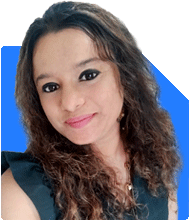How can I gain financial freedom by 40 with an existing 25 lakh FD?
Ramalingam Kalirajan |10902 Answers |Ask -Follow
Mutual Funds, Financial Planning Expert - Answered on Aug 22, 2024
He has an MBA in finance from the University of Madras and is a certified financial planner.
He is the director and chief financial planner at Holistic Investment, a Chennai-based firm that offers financial planning and wealth management advice.... more

I am 26 and done 25 lakh FD and I am doing SIP of 7 K ( TATA Guaranteed Return Plan ) where 3300 goes to market linked and rest part of Insurance policy which will be returned at maturity . The period is 21 Years . Another 3 K SIP in mutual funds . All my SIP running on Interest from FD . Currently I returned from abroad and looking for suitable job in home country so have created a Eco system to maximise saving and reduce burden . Advise me If I can better manage the amount as I look to gain financial freedom by 40 Years with minimum monthly income of 1 lakhs . I dont have any term plan . I have a health Insurance of 10 Lakh and am unmarried .
At 26 years of age, your primary goal is to achieve financial freedom by 40. You want to generate a minimum monthly income of Rs. 1 lakh. Currently, you are back in India, searching for a suitable job.
Key Observations and Areas of Improvement
Dependency on FD Interest:
Your investments rely heavily on the interest from your FD. While this may seem safe, the interest rate on FDs often fails to keep up with inflation over time. This could impact the growth of your corpus.
Guaranteed Return Plan:
The Tata Guaranteed Return Plan has a market-linked component but also ties up a significant portion of your investment in an insurance component. Over 21 years, the returns from such plans are typically lower than purely market-based investments.
Lack of Term Insurance:
You don’t have a term plan, which is critical for providing a financial safety net for your dependents. A pure term plan is a must for anyone seeking financial security.
Health Insurance:
You have health insurance of Rs. 10 lakh, which is a good start. However, as you progress in your career and possibly start a family, you may need to revisit this coverage.
Focus on Achieving Financial Freedom by 40:
Achieving financial freedom by 40 is an ambitious yet achievable goal. To reach this, your investments must grow at a rate that significantly outpaces inflation. This requires a strategic shift in your investment approach.
Recommendations for Improved Financial Management
1. Diversify Investments for Higher Growth
Shift from Guaranteed Return Plan:
Consider moving away from plans that mix insurance with investments. The returns from these plans are usually suboptimal over the long term. You could consider surrendering the policy and redirecting the funds into mutual funds or other high-growth options.
Increase SIPs in Mutual Funds:
Actively managed mutual funds, when chosen correctly, can provide higher returns compared to guaranteed return plans. Increase your SIP amount in mutual funds to leverage the power of compounding over the next 14 years.
Avoid Dependency on FD Interest:
Instead of relying on FD interest to fund your SIPs, use the FD corpus for emergency needs or to fund significant future expenses like a down payment for a home.
2. Consider a Pure Term Insurance Plan
Invest in a Term Plan:
A term insurance plan is essential for securing your financial goals. It ensures that your dependents will have financial support if something unexpected happens. The premium for term plans is relatively low, especially when purchased at a young age.
3. Increase Equity Exposure for Long-Term Growth
Invest More in Equities:
To achieve a substantial corpus by the time you're 40, you need to increase your exposure to equities. This asset class has the potential to deliver high returns, especially over a 14-year horizon.
Balanced Approach:
While equities can be volatile, a balanced approach through diversified equity mutual funds can mitigate risks. Choose funds that have a consistent track record and are actively managed by experienced fund managers.
4. Consider Building an Emergency Fund
Create an Emergency Fund:
Set aside at least 6 to 12 months' worth of expenses in a liquid fund or a high-interest savings account. This will protect you against unexpected expenses and job loss without needing to dip into your investments.
5. Financial Freedom Planning
Calculate the Corpus Needed:
To generate a monthly income of Rs. 1 lakh after 14 years, you will need a substantial corpus. Assuming a safe withdrawal rate, you may need around Rs. 2.5 to 3 crore.
Focus on Regular Monitoring:
Regularly monitor your investment portfolio and make adjustments as necessary. Staying invested through market cycles and avoiding panic during downturns will help you stay on track.
Consider Professional Guidance:
Although you’re already making sound decisions, consulting with a Certified Financial Planner (CFP) can provide you with tailored strategies to optimize your investment portfolio.
6. Consider Tax-Efficient Investments
Utilize Tax Benefits:
While increasing your SIPs, consider investing in ELSS (Equity-Linked Savings Scheme) mutual funds, which offer tax benefits under Section 80C. This can help reduce your taxable income while providing equity exposure.
7. Focus on Personal and Professional Development
Invest in Yourself:
Since you’ve recently returned from abroad and are looking for a job, investing in personal and professional development can significantly impact your earning potential.
Build Skills and Network:
Enhance your skills or explore new areas that are in demand in the current job market. Networking can also play a crucial role in securing a better position that aligns with your financial goals.
8. Review Your Financial Plan Annually
Annual Review:
As your income and life circumstances change, revisit your financial plan annually. Adjust your SIPs, insurance cover, and health insurance as needed to stay aligned with your goals.
Stay Updated:
Stay informed about market trends and changes in tax laws that may impact your investments. Regular updates to your plan will help you maximize your returns and reach your goals efficiently.
9. Prepare for Life Changes
Consider Future Responsibilities:
While you are currently unmarried, future responsibilities like marriage or starting a family will impact your financial plan. Ensure that your financial decisions are flexible enough to accommodate these potential changes.
Plan for Big Expenses:
Consider large future expenses such as buying a home or children’s education. Planning these now can ensure you’re financially prepared when the time comes.
Finally
Your current financial setup has laid a strong foundation. However, to achieve your goal of financial freedom by 40, you must strategically shift your investments towards higher-growth avenues. This includes moving away from guaranteed return plans and increasing your SIPs in actively managed mutual funds. Investing in a pure term insurance plan is also crucial for safeguarding your financial goals. As you continue to grow professionally, revisiting and refining your financial plan annually will keep you on track to achieve your financial freedom goals.
Best Regards,
K. Ramalingam, MBA, CFP
Chief Financial Planner,
www.holisticinvestment.in
You may like to see similar questions and answers below
Ramalingam Kalirajan |10902 Answers |Ask -Follow
Mutual Funds, Financial Planning Expert - Answered on Apr 17, 2024
Jinal Mehta | Answer |Ask -Follow
Financial Planner - Answered on Jun 24, 2024
Ramalingam Kalirajan |10902 Answers |Ask -Follow
Mutual Funds, Financial Planning Expert - Answered on Aug 16, 2024
Ramalingam Kalirajan |10902 Answers |Ask -Follow
Mutual Funds, Financial Planning Expert - Answered on Aug 27, 2024
Ramalingam Kalirajan |10902 Answers |Ask -Follow
Mutual Funds, Financial Planning Expert - Answered on May 07, 2025
Chocko Valliappa |544 Answers |Ask -Follow
Tech Entrepreneur, Educationist - Answered on Dec 18, 2025
Chocko Valliappa |544 Answers |Ask -Follow
Tech Entrepreneur, Educationist - Answered on Dec 18, 2025
Chocko Valliappa |544 Answers |Ask -Follow
Tech Entrepreneur, Educationist - Answered on Dec 18, 2025
Anu Krishna |1751 Answers |Ask -Follow
Relationships Expert, Mind Coach - Answered on Dec 18, 2025
Chocko Valliappa |544 Answers |Ask -Follow
Tech Entrepreneur, Educationist - Answered on Dec 18, 2025
Chocko Valliappa |544 Answers |Ask -Follow
Tech Entrepreneur, Educationist - Answered on Dec 18, 2025
Naveenn Kummar |236 Answers |Ask -Follow
Financial Planner, MF, Insurance Expert - Answered on Dec 18, 2025
Anu Krishna |1751 Answers |Ask -Follow
Relationships Expert, Mind Coach - Answered on Dec 17, 2025
Anu Krishna |1751 Answers |Ask -Follow
Relationships Expert, Mind Coach - Answered on Dec 17, 2025
Radheshyam Zanwar |6748 Answers |Ask -Follow
MHT-CET, IIT-JEE, NEET-UG Expert - Answered on Dec 17, 2025


























